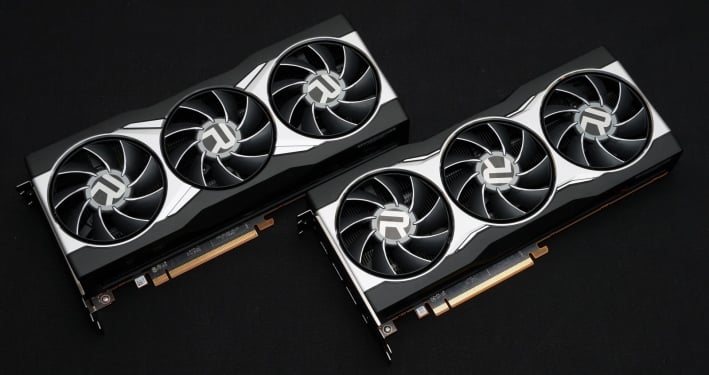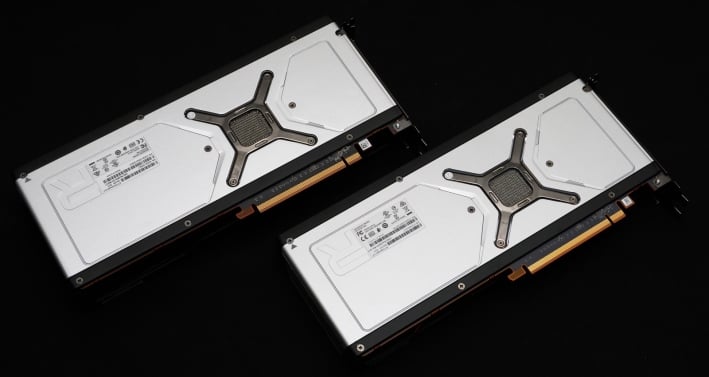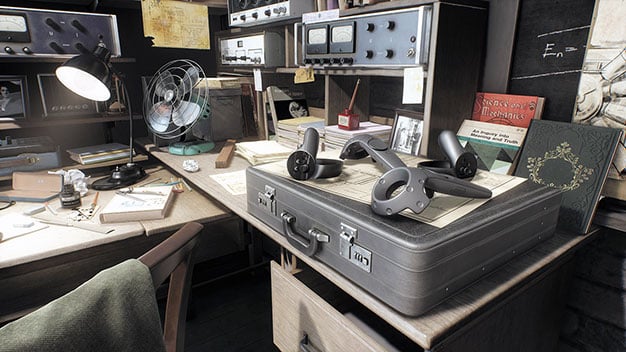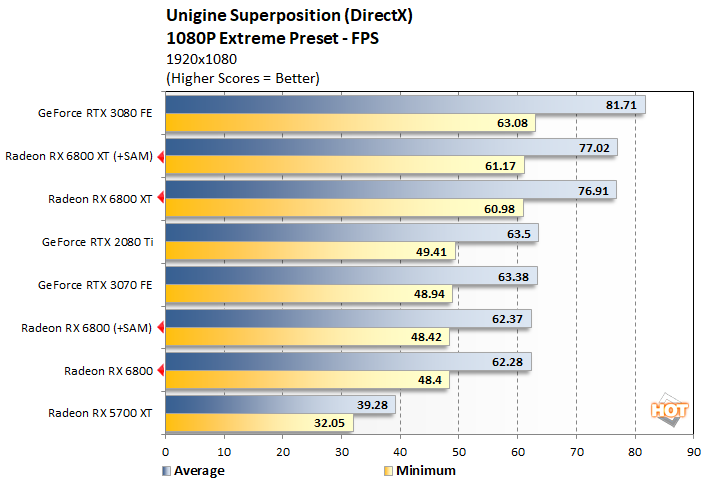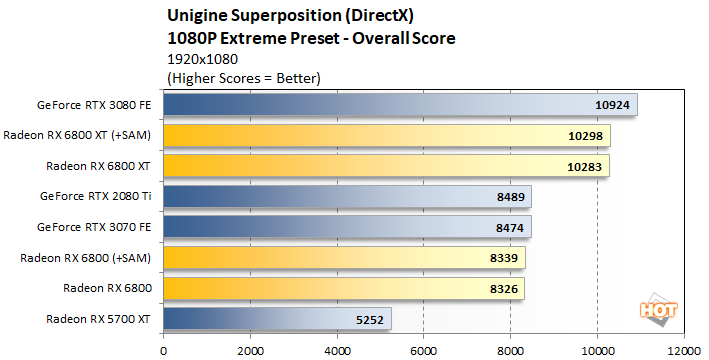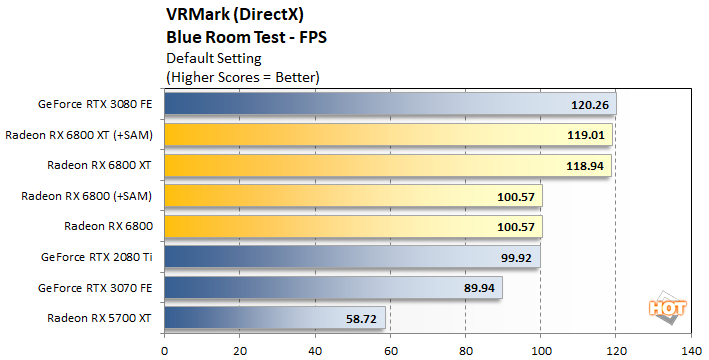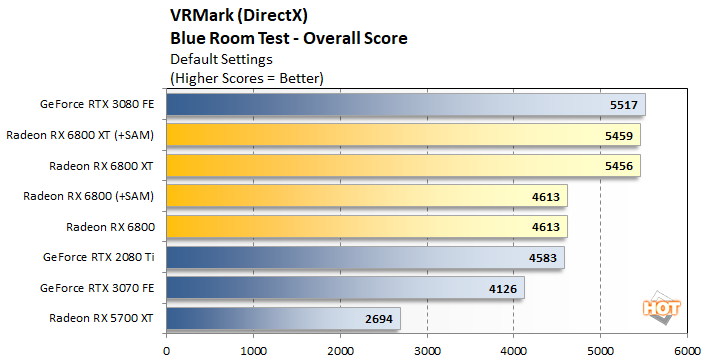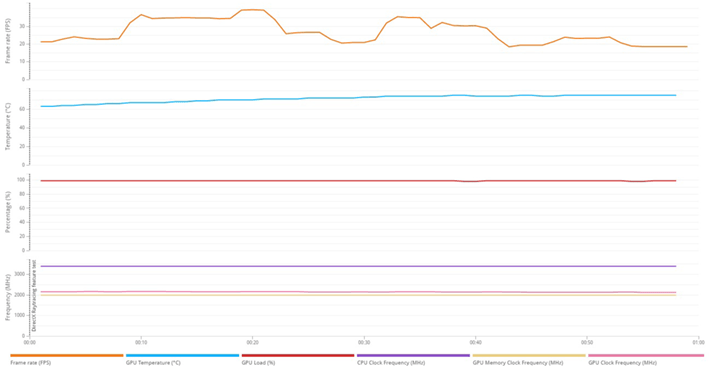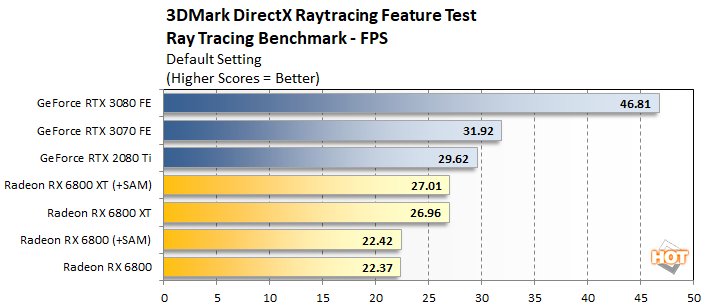Radeon RX 6800 & RX 6800 XT Review: AMD’s Back With Big Navi
AMD Radeon RX 6800 & 6800 XT Review: Compute, Render And Synthetic Tests
How We Configured Our Test Systems: We tested the graphics cards represented in this article on a pair of systems. One featured an ASUS Prime X299 Deluxe motherboard powered by a Core i9-10980XE 18-core / 36-thread processor and 32GB of HyperX DDR4 RAM clocked at 2,933MHz. The other was built-around an MSI X570 Godlike motherboard, equipped with a Ryzen 9 5950X and 16GB of G.SKILL DDR4 RAM clocked at 3,200MHz. The first thing we did when configuring the test system was enter the UEFI and set all values to their "high performance" defaults, then we disabled any integrated peripherals that wouldn't be put to use. The memory's clock was dialed in to its optimal performance settings using its XMP profile and the solid state drive was then formatted and Windows 10 Professional x64 was installed and fully updated. When the Windows installation was complete, we installed all of the drivers, games, applications and benchmark tools necessary to complete our tests.
For all of the standard tests, the Radeon RX 6000 series cards were tested using their "Balanced" performance profile. "Rage" mode was enabled for a sampling of tests present in the overclocking section of this article, however. The new Radeons were also tested with and without Smart Access Memory enabled in an attempt to paint the most complete picture of performance.
|
|
|
| Hardware Used: Intel Core i9-10980XE (3GHz - 4.4GHz, 18-Core) ASUS X299 Prime (Intel X299 Chipset) 32GB Corsair DDR4-2933 AMD Ryzen 9 5950X (3.4GHz - 4.9GHz, 16-Core) MSI X570 Godlike (AMD X570 Chipset) 16GB G.SKILL DDR4-3200 Samsung SSD 970 EVO Integrated Audio Integrated Network NVIDIA GeForce RTX 3070 FE NVIDIA GeForce RTX 3080 FE NVIDIA GeForce RTX 2080 Ti FE AMD Radeon RX 5700 XT AMD Radeon RX 6800 AMD Radeon RX 6800 XT |
Relevant Software: Windows 10 Pro x64 (v2004) AMD Radeon Software v20.8.3 NVIDIA GeForce Drivers v457.30 Benchmarks Used: IndigoBench v4 LuxMark v4_alpha0 SiSoft SANDRA 2020 VRMark 3DMark (Time Spy, Fire Strike, Port Royal, DXR) Unigine Superposition Crytek Neon Noir Metro Exodus Red Dead Redemption 2 Gears Tactics F1 2020 FarCry: New Dawn |
|
|
|
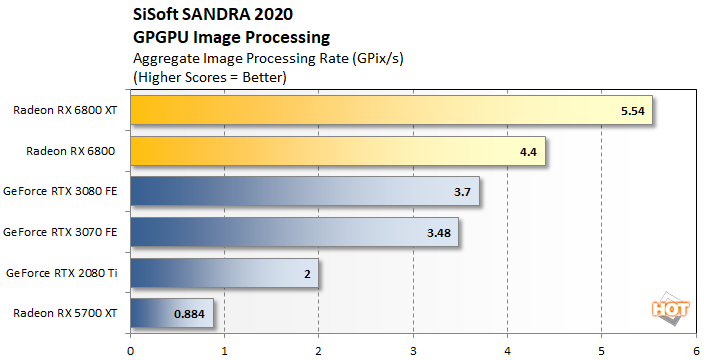
|
LuxMark is a cross-platform, OpenCL-accelerated 3D rendering benchmark. It's a tool based on the open source LuxRender physically-based spectral rendering engine, which accurately models the transportation of light and supports high dynamic range. LuxRender features a number of material types to allow rendering of photo-realistic and artistic scenes. LuxRender is free software, licensed under the GPL, that offers plugins for packages like Blender, Maya, Cinema 4D and 3DS Max.
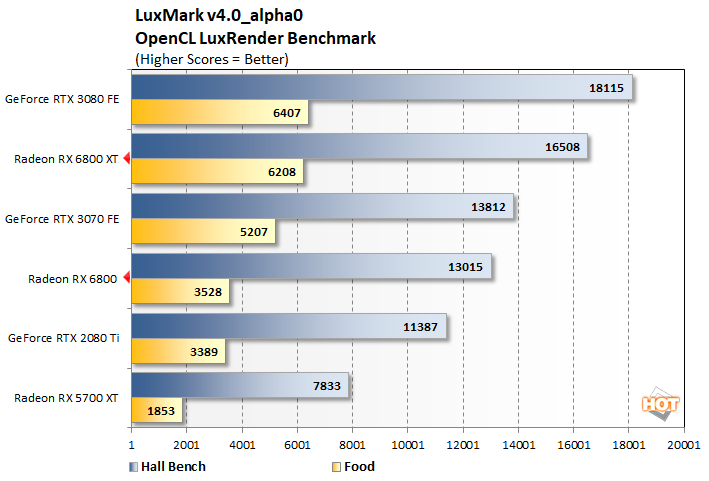
|
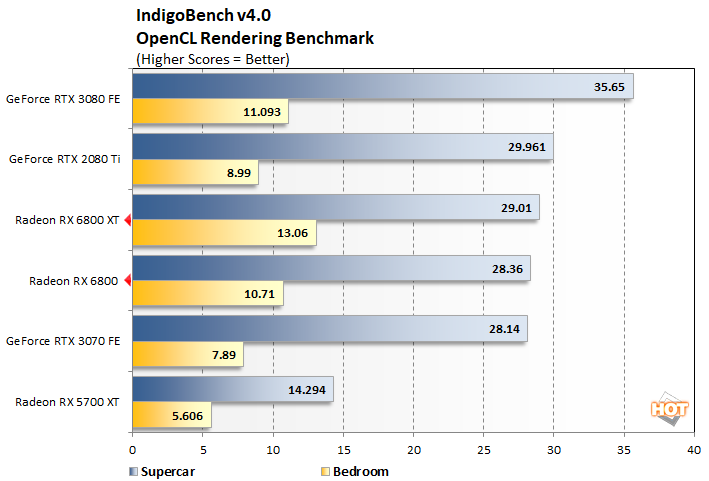
The Radeon RX 6800 and RX 6800 XT finish right in the middle of the pack here, according to the results with the "Supercar" model at least. With the more taxing "Bedroom" model, the Radeon RX 6800 XT scores a first place finish, with the RX 6800 trailing only the GeForce RTX 3080.
|
|
|
Unigine Superposition's 1080P Extreme test has the new Radeon RX 6800 XT trailing the GeForce RTX 3080 by a few percentage points. The Radeon RX 6800 also trails its NVIDIA-built GeForce RTX contemporaries, but the delta separating the cards are much smaller. Enabling Smart Access Memory (SAM) has a minimal impact on performance here.
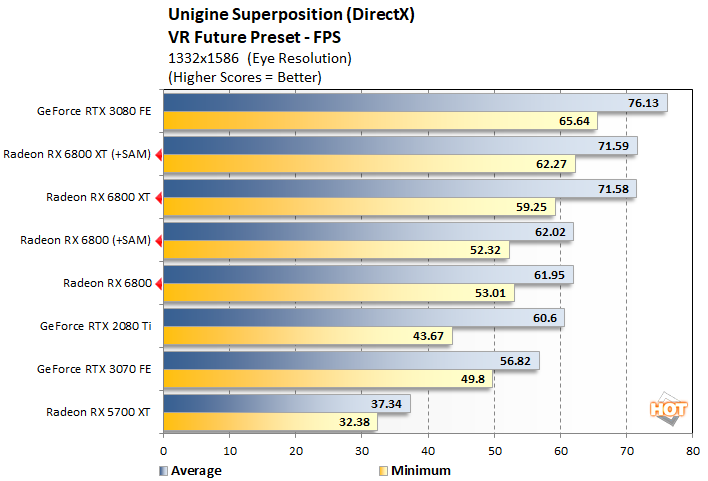
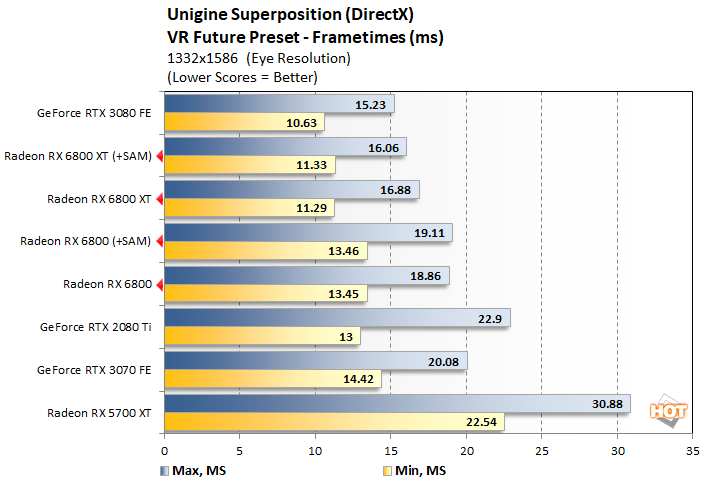

Enabling SAM in Superposition's VR Future test is a wash. In terms of the overall performance trend though, the Radeon RX 6800 XT once again trails the GeForce RTX 3080, but the Radeon RX 6800 pulls ahead of the GeForce RTX 2080 Ti and RTX 3070.
|
VR Mark tells essentially the same story as Unigine's VR Future benchmark. SAM has virtually no impact on performance (yes, the score was identical from run to run with the 6800 with and without SAM -- that's not a typo), and the new Radeon RX 6800 series cards outpace everything but the GeForce RTX 3080.
|

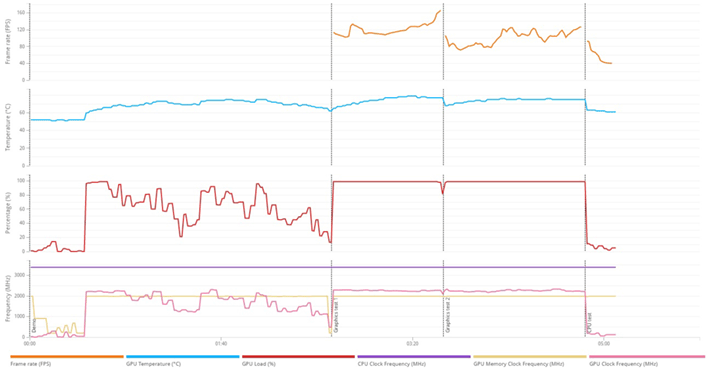
Radeon RX 6800 XT Time Spy Details


|
|
|
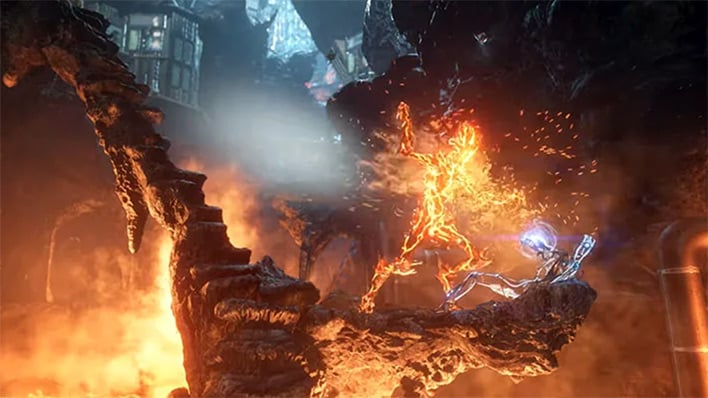
3DMark Fire Strike
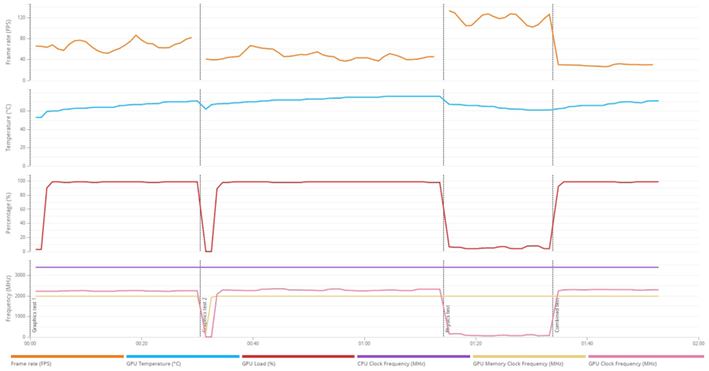
Radeon RX 6800 XT Fire Strike Ultra Details
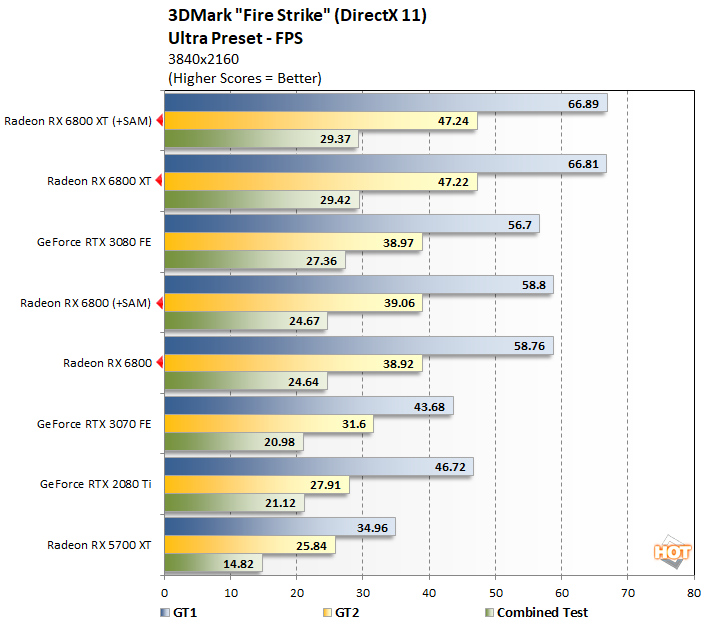
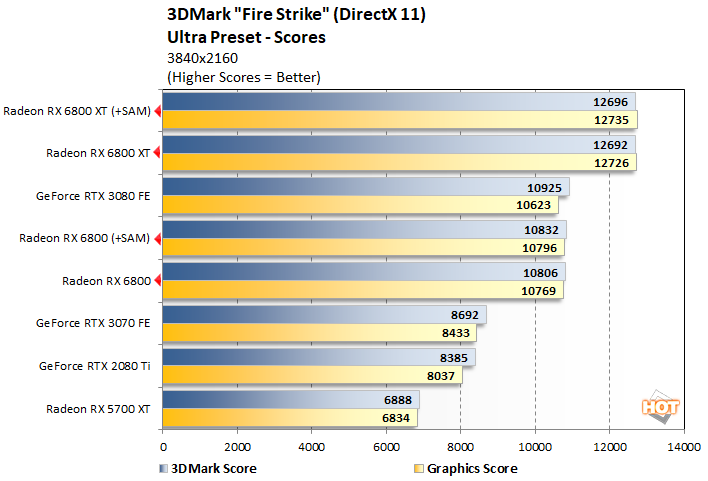
Our results in the DX11-based Fire Strike benchmark somewhat mirror those of Time Spy. The Radeon RX 6800 XT scores another decisive victory here, to finish at the top of the charts. The Radeon RX 6800 also performs well and significantly outpaces the GeForce RTX 3070 and RTX 2080 Ti.
|
Port Royal was released earlier this year as an update to UL’s popular 3DMark suite. It is designed to test real-time ray tracing performance of graphics cards that support Microsoft DirectX Raytracing, or DXR. Although DXR is technically compatible with all DX12-class GPUs, the graphics card must have drivers that enable DXR, and NVIDIA is the only company to have done so at this point, hence the lack of Radeons in the chart.

3DMark Port Royal
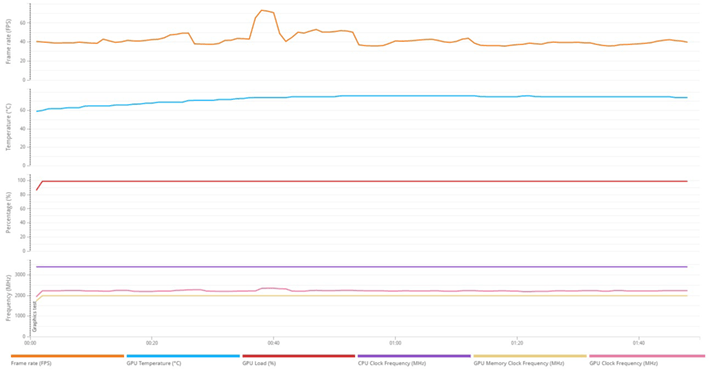
Radeon RX 6800 XT Port Royal Details
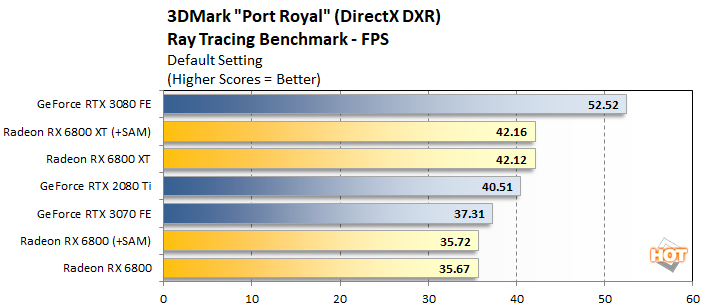

We also experimented with the recently released 3DMark DirectX Ray Tracing Feature test, but the results were less kind to AMD...
The Radeon RX 6800 XT and RX 6800 bring up the rear in this test, falling behind all of the GeForce cards. The GeForce RTX 3080 puts up particularly strong numbers in this test, that more than double the Radeon RX 6800's performance.

